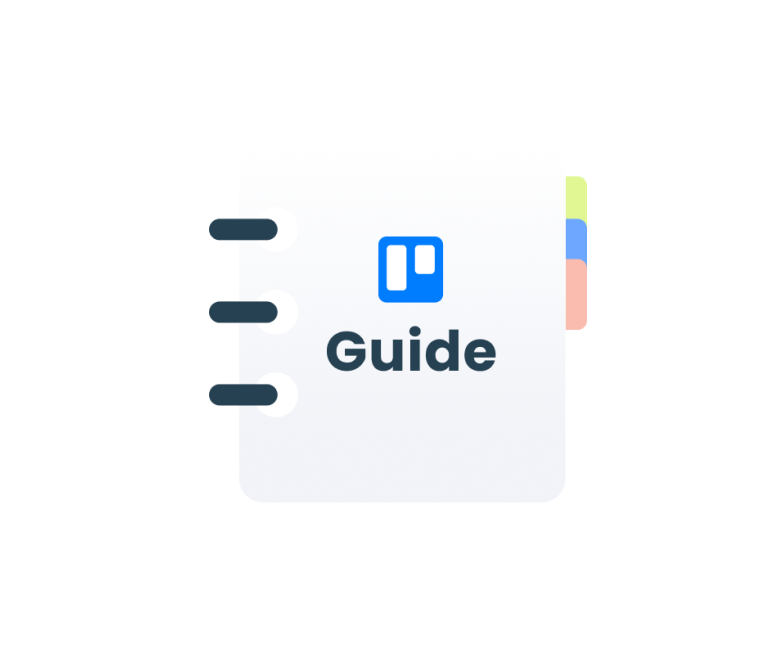How to Use Trello for Effective Project Management: The Complete Guide in 2025
The Core Principles of Kanban and How to Make Them Work on Your Trello Kanban Board
Kanban, as a highly effective project management approach, revolves around three fundamental principles: Visualizing work, Optimizing flow, and Continuously improving processes.
While these principles form a powerful foundation for success, it is crucial to recognize that some individuals or teams tend to fixate solely on visualizing work, leading to frustration when desired results aren't achieved.
To harness the true potential of Kanban, one must not only visualize the process, but also proactively focus on optimizing and improving it in a well-directed manner.
In this article, we're diving deep into all three core principles of Kanban and explain how you can start implementing them in your Trello workflow.
1. Visualize Work
The first principle involves representing the entire workflow visually on a Kanban board. This board becomes a central hub, displaying the various stages of work through columns, while tasks are represented as cards within these columns. It provides transparency, allowing team members to grasp the current status of each task and the workflow as a whole. 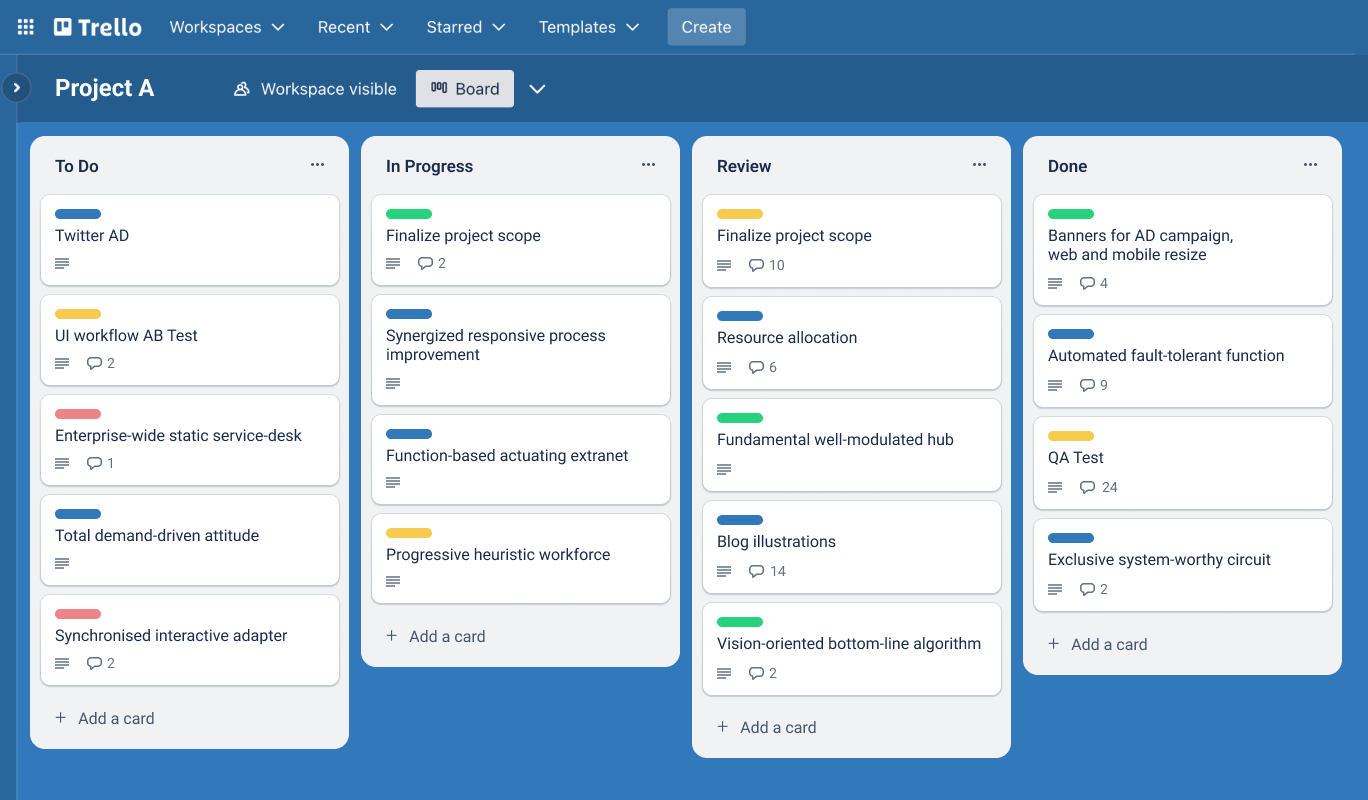
However, solely visualizing work is akin to mapping a journey without embarking on it—critical information is available, but progress and outcomes remain stagnant.
2. Optimize Flow
Flow in Kanban refers to the smooth movement of work items through the entire workflow, from inception to completion. It represents the efficiency and speed at which work progresses within a Kanban system. The objective of optimizing flow is to reduce lead times, minimize bottlenecks, and achieve a steady, consistent pace of work delivery.
To measure flow in Kanban, there are several key metrics that teams can use:
- Lead Time: Lead time is the time taken for a work item to move from the moment it enters the system until it is completed. It provides an overall view of the system's efficiency.
- Cycle Time: Cycle time is the time taken to complete a single unit of work, starting from when the actual work begins until it is finished. It gives a more granular view of how long each task takes to be completed.
- Throughput: Throughput measures the number of work items completed within a specific time period. It helps gauge the team's overall productivity.
- Work Item Age: This metric shows how long an individual work item has been in progress, providing insights into potential bottlenecks and stalled work items.
One of Trello power-ups, Kanban Analytics by Nave, is a truly great tool to get this information in simple, intuitive dashboards.
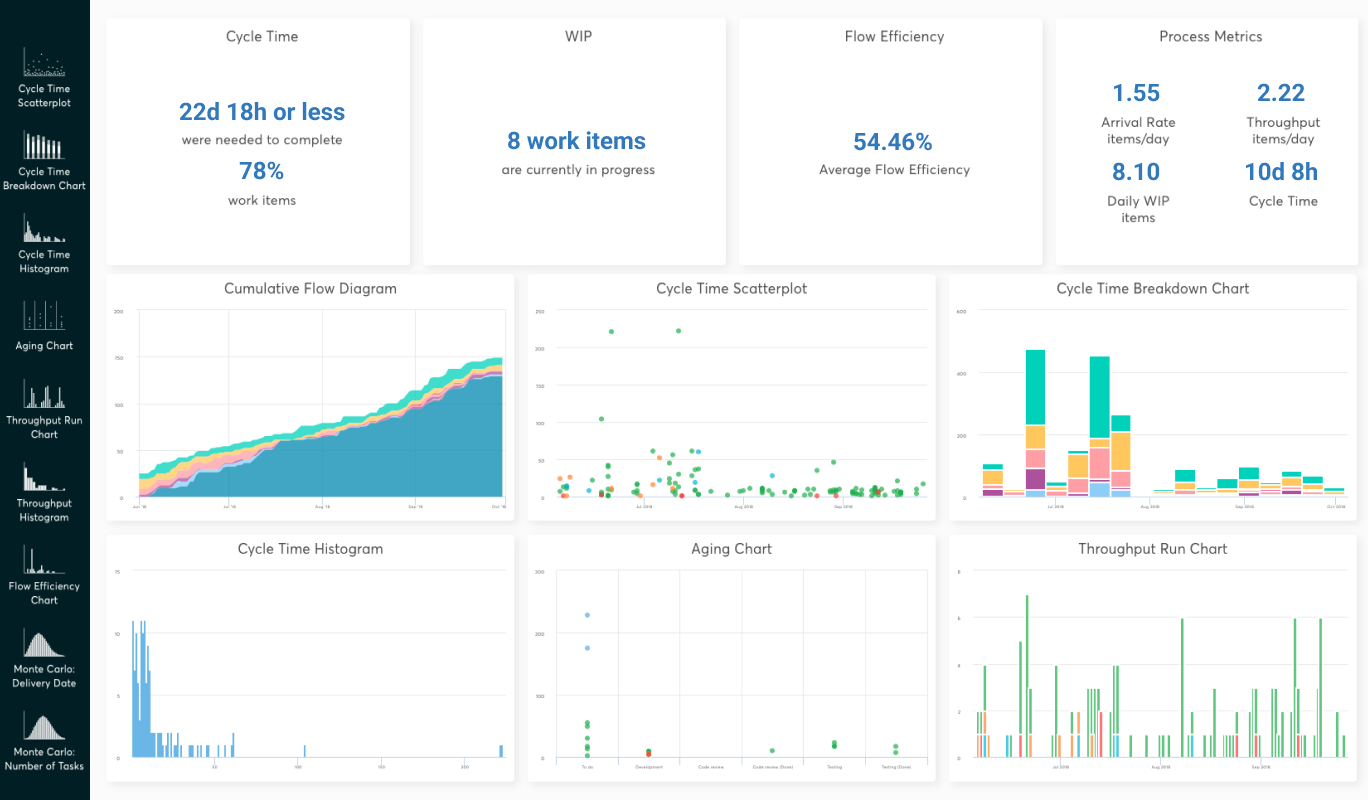
Work in Progress (WIP) limits are one of the core principles of Kanban, and they play a crucial role in optimizing flow. WIP limits represent the maximum number of work items that a specific stage of the workflow or the entire system can handle simultaneously.
By setting work in progress (WIP) limits and carefully managing task dependencies, the team ensures that they do not take on more work than they can efficiently handle, preventing overburdening and fostering a balanced workflow.
Make use of List Limit power-up to set WIP limits per list in Trello based on your team's capacity and the ideal number of tasks to tackle at once. Once you hit that limit, finish, or move tasks forward before starting new ones.
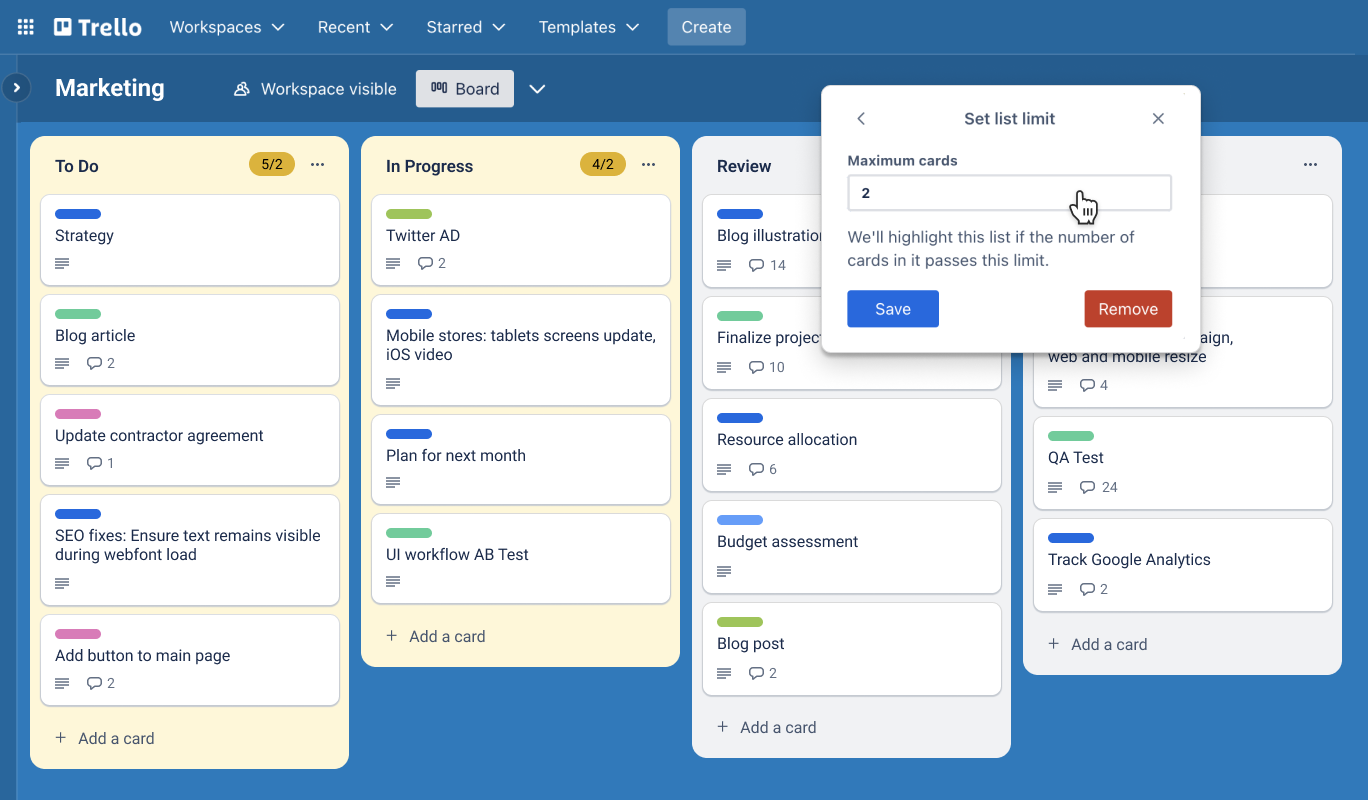
As for managing task dependencies, Planyway power-up will come in handy. It will show blocking and waiting tasks inside Trello cards so that you can spot those sneaky bottlenecks.
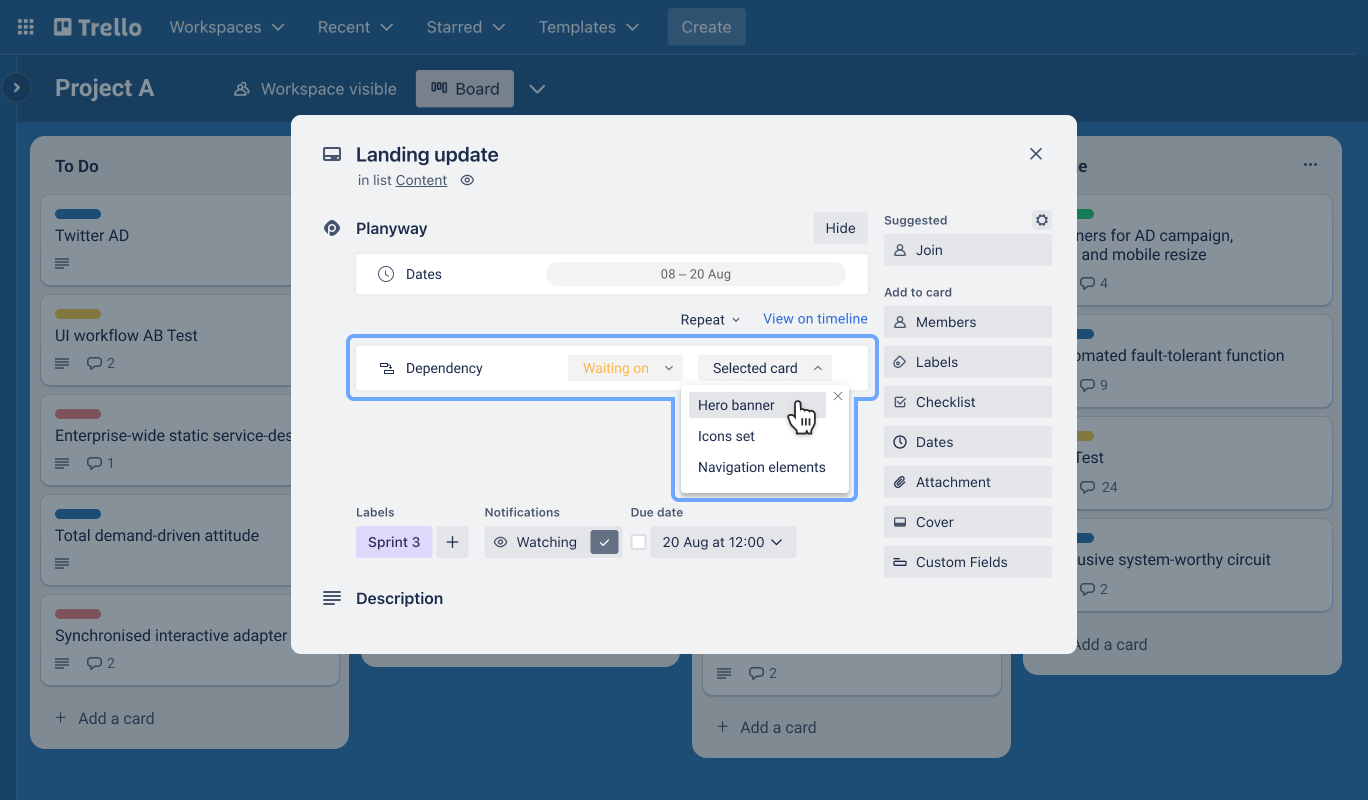
And, if you’d like to get more visibility, it will visualize your Trello Kanban workflow on the timeline view. 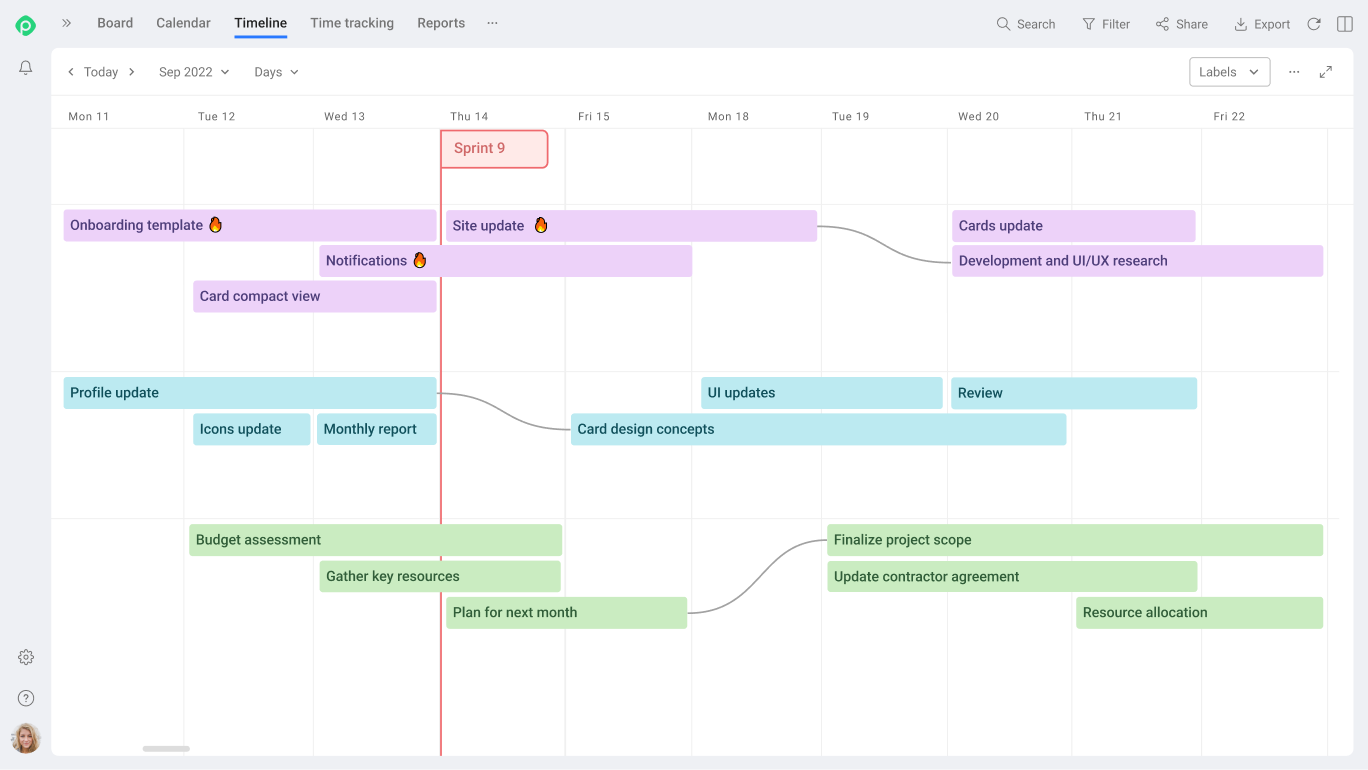
3. Continuous Improvement
At the heart of the Kanban method lies the principle of continuous improvement. It emphasizes the regular and systematic examination of the Kanban board, workflow, and processes to identify areas of inefficiency, waste, or bottlenecks. Embracing this principle ensures that teams constantly seek ways to optimize flow, increase productivity, and deliver value to customers more effectively.
Retrospective meetings are a cornerstone of continuous improvement in Kanban, as they play a pivotal role in optimizing flow. These regular gatherings provide a dedicated space for the team to reflect on their performance, processes, and teamwork.
By conducting retrospectives, traditional or agile variations, at the end of each iteration or specific time frame, teams can gain valuable insights and take action to improve their flow.
When working with Kanban board in Trello, there is a useful power-up Agile Retrospectives that can help you run retrospective more efficiently.
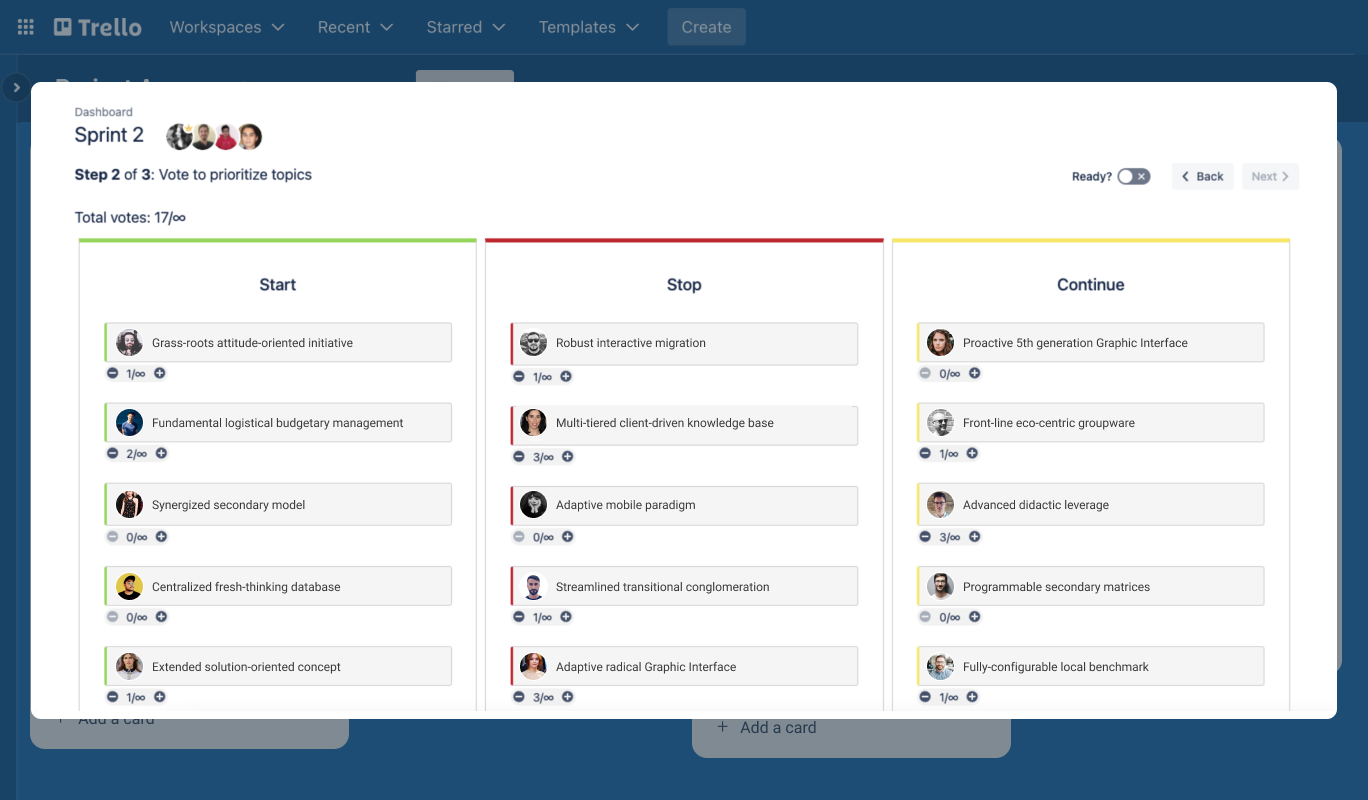
Apart from retrospectives, continuous improvement can also involve other practices like Kaizen events, where teams dedicate focused time to address specific process improvement opportunities.
Additionally, feedback loops from customers and stakeholders provide valuable insights into customer needs and expectations, guiding the team in delivering better outcomes.
Wrap-Up
By integrating all three principles of Kanban flow—visualizing work, optimizing flow, and continuously improving processes—teams can create a dynamic and adaptive work environment. This holistic approach empowers teams to achieve higher levels of productivity, enhance quality, and ultimately deliver more value to their customers.
It is essential to remember that Kanban is not a static methodology but a dynamic system that evolves through ongoing feedback and collaboration, enabling organizations to stay responsive and competitive in a rapidly changing business landscape.
